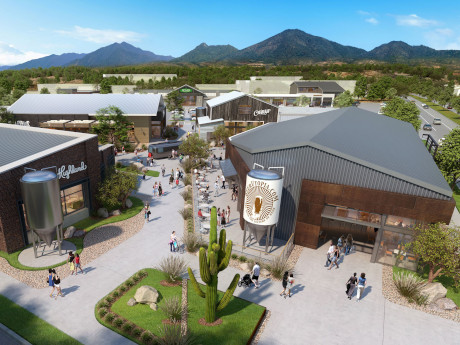Ryan Desmond, partner, Western Retail Advisors in Phoenix
Metro Phoenix’s population grew faster than any other major U.S. city between 2010 and 2020. By 2021, the Valley’s 1.48 percent population growth continued to far exceed the country’s .01 percent growth — the slowest annual growth rate in our nation’s history.
For a community that has historically been criticized as being over-retailed on a per-capita basis, this has injected tremendous strength into the local retail market.
Today, Phoenix ranks as a hotspot among U.S. cities for retail absorption. According to CoStar, Phoenix had absorbed 4.1 million square feet of retail space year over year — the strongest absorption since the start of the Great Recession — by the start of the second quarter in 2023. This reduced the market’s overall vacancy rate to 5 percent. This is impressive, but it doesn’t reflect the increased gap between demand for Class A product and all other retail classes.
Much like the flight to quality happening in the office sector, tenants looking for retail space in metro Phoenix want excellence: high-traffic locations in a growth submarket with compelling demographics. As a result, we have seen more metro Phoenix Class A retail properties reach full — or nearly full — occupancy in the past 12 months than at any other time in recent history.
The impact of this flight to quality is not surprising for a few reasons.
Rents are Rising
Asking rents across the Valley have spiked, arguably exceeding most other Western markets. In some Phoenix submarkets, Class A rents are reaching levels found in the stronger submarkets of Los Angeles. CoStar reports current average metro Phoenix retail rents at $23.08 per square foot, but shop rents in the highest-demand markets have climbed into the $50 per square foot range and show no signs of cooling. One example is Queen Creek. Once a quiet farming suburb in Phoenix’s Southeast Valley, Queen Creek has become a mega-growth area with superior demographics, allowing tenants to outperform other high-demand markets like Scottdale.
Landlords Have Options
For the first time since the early 2000s, landlords have the option to be more selective. This is the case not only in terms of rents but also in the types of tenants they select. They’re picking only the best operators with the best credit — a particularly attractive advantage in an era of banking and finance trials.
Construction is Back
Though a bit overdue, metro Phoenix now has more retail space under development than almost any other major city in the nation. CoStar puts this number at more than 3.1 million square feet. Just this year, SimonCRE delivered Phase I of the first power center to open in metro Phoenix since 2008. Located in the West Valley, the Village at Prasada is home to tenants like PetSmart, Ross, Sprouts, Total Wine and Ulta. Two additional phases are planned at the Village at Prasada, which will ultimately bring the center to 1.2 million square feet.
Several new power centers are set to follow the Village over the next three years. These include Vestar’s Verrado Marketplace and Laveen Towne Center, both planned for the West Valley, as well as Vineyard Town Center in Queen Creek, which is currently under construction.
After having such limited retail of scale built in metro Phoenix in the past 15 years, it seems the market is finally working on all cylinders to serve increasing demand. Until this new space delivers, however, there is no easy solution for retailers looking for inventory. Our best advice for retailers serious about securing Phoenix’s most coveted new retail spaces is to plan ahead. Determine where you want to be and stay on top of that market so you can respond quickly to new opportunities. Many of the tenants we’re currently working with are actively considering their 2025 and 2026 pipelines.
Of course, retailers are facing other challenges as well, such as maintaining high standards of quality product and service while simultaneously confronting rising construction costs, increasing rental rates and employee wage growth. The tenants that succeed at navigating these conditions alongside a tightening inventory will be rewarded with premier locations in one of the most dynamic and fastest-growing retail markets in the country.


